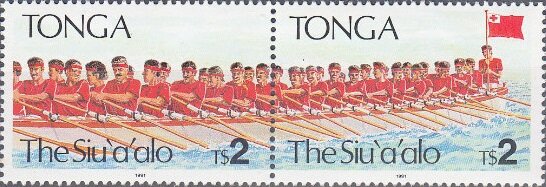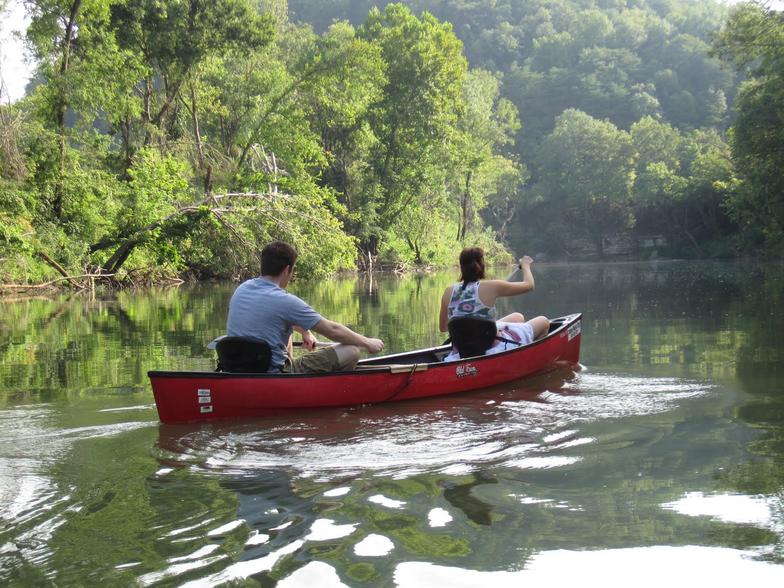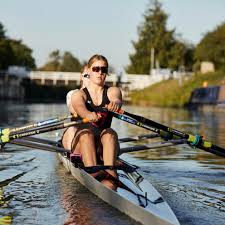Se-tenant: Large canoe (Tonga 1991)
Large canoe (Tonga 1991)
29 October (Tonga ) within release Siu'a'alo Rowing Festival goes into circulation Se-tenant Large canoe face value 2*2 Tongan pa'anga
| Se-tenant Large canoe in catalogues | |
|---|---|
| Michel: | Mi: TO 1190-1191 |
| Stamp Number: | Sn: TO 782a |
| Yvert et Tellier: | Yt: TO 835-836 |
| Stanley Gibbons: | Sg: TO 1151a |
Se-tenant is square format.
Se-tenant pairAlso in the issue Siu'a'alo Rowing Festival:
- Stamp - Bow of large canoe face value 2;
- Stamp - Outrigger face value 1;
- Stamp - Stern of large canoe face value 2;
- Stamp - Women’s coxed eight face value 42;
- Stamp - Men’s longboat face value 57;
- Se-tenant - Large canoe face value 2*2;
Se-tenant Large canoe it reflects the thematic directions:
Canoeing is an activity which involves paddling a canoe with a single-bladed paddle. Common meanings of the term are limited to when the canoeing is the central purpose of the activity. Broader meanings include when it is combined with other activities such as canoe camping, or where canoeing is merely a transportation method used to accomplish other activities. Most present-day canoeing is done as or as a part of a sport or recreational activity. In some parts of Europe canoeing refers to both canoeing and kayaking, with a canoe being called an open canoe.
A festival is an event celebrated by a community and centering on some characteristic aspect or aspects of that community and its religion or cultures. It is often marked as a local or national holiday, mela, or eid. A festival constitutes typical cases of glocalization, as well as the high culture-low culture interrelationship. Next to religion and folklore, a significant origin is agricultural. Food is such a vital resource that many festivals are associated with harvest time. Religious commemoration and thanksgiving for good harvests are blended in events that take place in autumn, such as Halloween in the northern hemisphere and Easter in the southern.
A flag is a piece of fabric (most often rectangular or quadrilateral) with a distinctive design that is used as a symbol, as a signaling device, or as decoration. The term flag is also used to refer to the graphic design employed, and flags have since evolved into a general tool for rudimentary signalling and identification, especially in environments where communication is similarly challenging (such as the maritime environment where semaphore is used). National flags are patriotic symbols with varied wide-ranging interpretations, often including strong military associations due to their original and ongoing military uses. Flags are also used in messaging, advertising, or for other decorative purposes. The study of flags is known as vexillology, from the Latin word vexillum, meaning flag or banner.
Rowing is the act of propelling a human-powered watercraft using the sweeping motions of oars to displace water and generate reactional propulsion. Rowing is functionally similar to paddling, but rowing requires oars to be mechanically attached to the boat, and the rower drives the oar like a lever, exerting force in the same direction as the boat's travel; while paddles are completely hand-held and have no attachment to the boat, and are driven like a cantilever, exerting force opposite to the intended direction of the boat.




